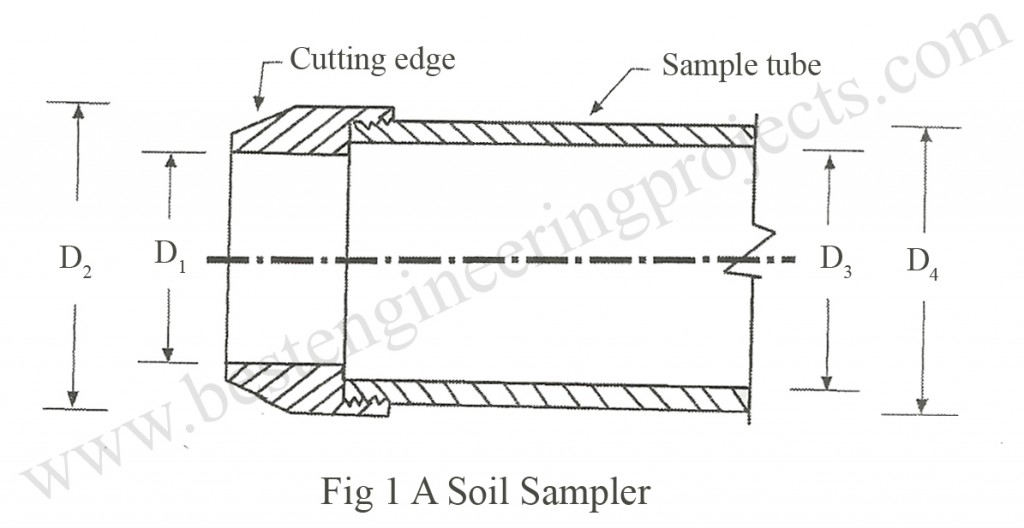What is Sampling and Sampling Procedure?
The process of extraction of soil samples from drilling tools and sampling equipment is known as sampling and sampling procedure. Two types of samples are taken during the site investigation and they are:
- Disturbed Samples
- Undisturbed Samples
Disturbed samples
Disturbed samples can be further classified as:
- Representative samples
- Non-representative samples
In case of disturbed samples the soil loses its original form or we can say the structural configuration of soil is changed or destroyed. During the standard penetration test of the sampling process, the samples which are taken from the cuttings of boring tools or from the barrel are all disturbed. If the disturbed samples have the same composition as that existing at the location of sampling, that type of sample is called representative disturbed samples.
On the other hand, if original constituents of the soil is lost during sampling process or mixed with other layers and soil loses its original form, the sample is called non-representative disturbed samples. After identification of sample types, they are used accordingly. The representative samples of a soil are found suitable for carrying out classification test whereas non-representative samples of the soil can only provide rough idea about the soil and its stratification.
Undisturbed samples
A sample, which retains its structural arrangement and composition even after going through different phases is called an undisturbed sample. However, it is almost impossible to recover sample of soils in a completely undisturbed condition during sampling process without losing its original configuration. Disturbance can’t be completely avoided but there are some ways to reduce its consequences. The degree of disturbance in samples depends upon the dimension of the sampler and method of recovery. The least disturbance is caused if a block of sample is carefully exposed and trimmed from within a trial pit. Usually undisturbed samples are recovered either by driving or pushing a tube into the sub-soil in order to prevent extreme disturbance in soil samples.
Sampling Procedure
While sampling, the following points should be kept in mind for better results.
- Bottom of the hole should be cleaned thoroughly before taking samples to avoid disturbance.
- If the sampling is required above water table the borehole should be kept in dry condition.
- For sampling below water table it is necessary to maintain the net hydrostatic pressure at the bottom of the bore hole to Zero.
- The sampler should be pushed into the soil as far as practicable. Driving of the sampler should be permitted only when it cannot be pushed into the soil. Sampler should not be pushed or driven into the soil for its whole length but should be stopped 50 to 80 mm before reaching the full length.
- Sample should be separated from the soil by turning the sampler one or two round.
